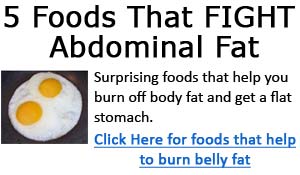Movement Between Sets:
Just think about it. It's like a warm up and cool down all over again but
between the sets. Most people understand the importance of warming up before
lifting weights. They also know about a proper cool down after working out. But did you know that you can use those sample principles on a minute level in
between your sets?
This movement not only serves as a 'transition' between an all out effort and recovery but it aids in better circulation and helps reduce the swelling of muscular tissues.
Periodization:
Remember that soreness can be caused by a few hypothesis (tissue damage, muscle damage, spasms). But did you stop to think that if you keep on training "heavy" you just keep on damaging the muscle at a micro level over and over without a change to recover?
Incorporating a light day or week into your training can help flush the area
with new blood, reduce the formation of scar tissue and flush waste from the
area. Planning these type of workouts in your training program will speed up the time
needed to recover as well as add variety to your program which in turn provides
overall recovery.
Sore Muscles Phase 3 - Post Training Recovery
My strong hunch is that most people will be unable to avoid soreness at some point and seek treatment. So that's why there's a few ways you can help reduce the severity of soreness during your training as well as aid in the recovery process after your training.
Contrast Showers:
Done on your lumbar area, this involves using short bursts of hot and cold water to improve the circulation. You can further stretch during this time to flush new blood to the area.
Post Workout Nutrition:
After your workout your body is in a prime time to devour nutrients. This is an
ideal time to give it the protein it needs with the carbohydrates for energy
recovery. You see, if muscle soreness is caused by micro trauma resulting in cellular
damage then obviously you want to give your body plenty of materials quickly to
repair itself. Proper post workout nutrition can reduce the amount of soreness you can
experience.
Therapeutic Modulaities:
This can encompass such things as massage, sauna, whirlpool, chiropractic adjustments, acupressure and others are among the more popular therapeutic modalities. Make no mistake....
Recovery really begins when you leave the gym. Depending on factors such as your level of fitness, age, medical conditions, you may be wise to use some or all of these post workout recovery methods to speed up overall recovery. There's no magic formula per se but anything you can do to help speed the recovery process will result in less muscular discomfort and quicker recovery for the next workout.
Have you heard that 90% gym-goers overtrain 90% of the time? Could it be that simply "under-recovered" and could easily stand to train more if only they could recover quicker?
Sleep:
While there is not a set number of hours you need to sleep as that depends on the individuals schedule, personal preferences and level of stress it's still clear that sleep is vital to recovery. This is the time your body repairs all that micro trauma.
If you aren't getting enough quality sleep, it can affect your overall recovery
and body's ability to repair itself. That can lead to prolonged muscle soreness.
The amount of sleep each person needs will vary. Make no mistake about muscle soreness...
It's uncomfortable!
But using any or all of the above recovery methods you can significantly reduce the duration of muscle soreness. Create a periodized program that helps to keep your body in a state of recovery and avoid overtraining.
>> Click here for a unique program to help you build 41lbs of drug free muscle in 6 months
If you are serious about transforming your body to its ultimate potential, get Will Brink's Bodybuilding Revealed with great reviews from top pro athletes like Lee Labrada, Charles Poliquin, and more.

